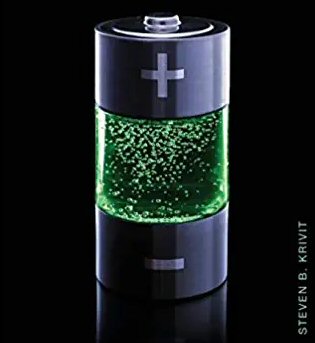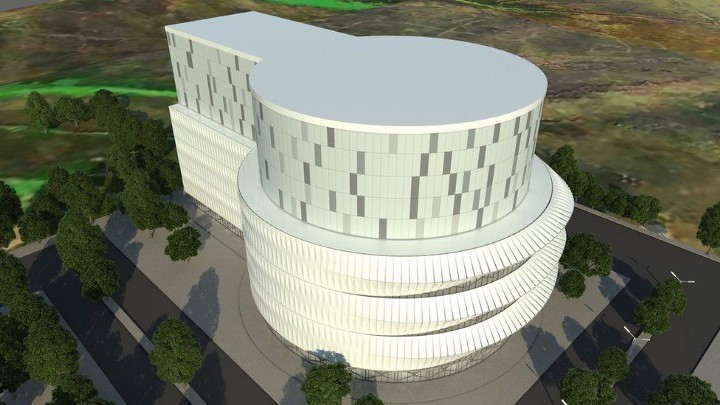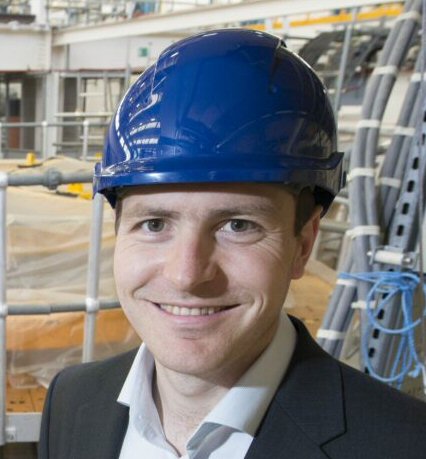
Sept. 13, 2022
Text from the DOE Press Release
The U.S. Department of Energy (DOE) today announced up to $10 million in funding to establish clear practices to determine whether low-energy nuclear reactions (LENR) could be the basis for a potentially transformative carbon-free energy source. The funding is part of the Advanced Research Projects Agency-Energy (ARPA-E) LENR Exploratory Topic, which aims to break the stalemate of research in this space.
“ARPA-E is all about risk and exploring where others cannot go, which is why we’ve set out with this LENR Exploratory Topic to conclusively answer the question ‘should this field move forward, or does it not show promise?’” said ARPA-E Acting Director and Deputy Director for Technology Dr. Jenny Gerbi. “We look forward to seeing the intrepid teams that come forward to approach this field of study with new perspectives and state-of-the-art scientific and technical capabilities.”
LENR Exploratory Topic awardees will pursue hypotheses-driven approaches toward producing publishable evidence of LENR in top-tier scientific journals by testing/confirming specific hypotheses (rather than focusing only on replication), identifying and verifying control of experimental variables and triggers, supporting more comprehensive diagnostics and analysis, and improving access to broader expertise and capabilities on research teams.
Source
Text from the Earlier DOE Announcement of Proposed Funding Opportunity
The Advanced Research Projects Agency – Energy (ARPA–E) is considering issuing a new Exploratory Topic under Funding Opportunity Announcements (FOAs) DE-FOA-0002784 and DE-FOA-0002785 to solicit applications for financial assistance in pursuit of hypotheses-driven approaches toward realizing diagnostic evidence of Low-Energy Nuclear Reactions (LENR) that are convincing to the wider scientific community. A goal of this Exploratory Topic will be to establish clear practices to rigorously answer the question, “should this field move forward given that LENR could be a potentially transformative carbon-free energy source, or does it conclusively not show promise?”
ARPA-E acknowledges the complex, controversial history of LENR beginning with the announcement by Martin Fleischmann and Stanley Pons in 1989 that they had achieved deuterium-deuterium (D-D) “cold fusion” in an electrochemical cell.[1] DOE reviews in 1989 and 2004 both concluded that the body of evidence to date did not support the claim of D-D fusion, but that research proposals on deuterated heavy metals should be evaluated under the standard peer-review process. This has not happened, in part because LENR was largely dismissed by the scientific research community by 1990.[2] Nevertheless, many groups from around the world continued to conduct varied LENR experiments on minimal budgets and to report evidence of excess heat and nuclear reactions (including neutrons, tritium, 3He, 4He, transmutation products, and isotopic shifts) in hundreds of reports/papers.[3] However, repeatability of the key evidence over multiple trials of seemingly the same experiment remains elusive to this day.[4] This may be due to limitations in experimental or diagnostic techniques, lack of awareness and/or control of the key triggers and independent variables of LENR experiments, or other reasons. Furthermore, results were typically not reported with the level of scientific rigor required by top-tier research journals. As a result, LENR as a field remains in a stalemate where lack of adequate funding inhibits the rigorous results that would engender additional funding and more rigorous studies.
For these reasons, ARPA-E has over the past 2+ years revisited the history of LENR as a field, studied the literature, released a general RFI[5] on nonconventional fusion approaches (that received many LENR-related responses), and held a LENR workshop.[6] The workshop was attended by 100+ people, including long-time and newer LENR researchers, non-LENR researchers from adjacent research disciplines, and other interested stakeholders. Institutions represented at the workshop included government laboratories/FFRDCs, top research universities, and private companies. The information gathered and received by ARPA-E, including from reputable experts at prestigious U.S. academic institutions, laboratories, and private corporations, supports the decision to proceed with the announcement of this Teaming Partner List.
As described in more detail below, the purpose of this announcement is to facilitate multi-disciplinary teaming, especially among but not limited to LENR researchers and nuclear diagnostic experts. ARPA-E believes that such teaming will improve the chances of advancing the field of LENR. The FOA will provide specific program goals, technical metrics, and selection criteria. The FOA terms will be controlling. For the purposes of the Teaming Partner List, the following summarizes current planning for the FOA:
Based on its claimed characteristics, LENR may be an ideal form of nuclear energy with potentially low capital cost, high specific power and energy, and little-to-no radioactive byproducts. If LENR can be irrefutably demonstrated and scaled, it could potentially become a disruptive technology with myriad energy, defense, transportation, and space applications, all with strong implications for U.S. technological leadership. For energy applications, LENR could potentially contribute to decarbonizing sectors such as industrial heat and transportation (~50% of U.S. and global CO2-equivalent emissions).
This forthcoming ARPA-E Exploratory Topic program aims to build on recent progress in the field,[7] with strong emphases on testing/confirming specific hypotheses (rather than focusing only on replication), identification and verifiable control of experimental variables and triggers, more comprehensive diagnostics and analysis, access to broader expertise and capabilities on research teams, and an insistence on peer review and publication in top-tier journals. To accomplish this goal, ARPA-E is looking for diverse interdisciplinary teams to obtain convincing empirical evidence of nuclear reactions in an LENR experiment through two possible categories:
A) LENR Experiments: The goal of this potential category would be to conduct LENR experiments through careful selection of specific, testable hypotheses that can be supported or retired upon the collection of correlated, multi-messenger nuclear diagnostics. Proposed LENR experiments would have a well-articulated connection to prior published LENR evidence. Principal Investigators would be expected to have a strong publication record of experimental work in leading journals, and at least one seasoned LENR practitioner (e.g., someone who has conducted and published results on LENR experiments) should be included on the team. Organizations and project teams interested in this potential category would either directly incorporate specialist capabilities described below or anticipate collaborating with one or more Capability Teams.
B) Capability Teams: The goal of this potential category would be to provide specialist support to LENR experiments, including but not limited to nuclear diagnostic detectors and capabilities, materials fabrication, elemental/isotopic sample analysis, statistical analysis, experimental design and related modeling, and calorimetry (note, however, that calorimetry would likely not be acceptable as a sole or primary diagnostic).
As a general matter, ARPA–E strongly encourages outstanding scientists and engineers from different organization, scientific disciplines, and technology sectors to participate in this Exploratory Topic. Multidisciplinary and cross-sector collaboration spanning organizational boundaries enables and accelerates the achievement of scientific and technological outcomes that were previously viewed as extremely difficult, if not impossible.
A Teaming Partner List is being compiled to facilitate the formation of new project teams. ARPA-E intends to make the Teaming Partner List available on ARPA–E eXCHANGE (https://ARPA–E-foa.energy.gov), ARPA–E’s online application portal, starting in July 2022. Once posted, The Teaming Partner List will be updated periodically, until the close of the Full Application period, to reflect the addition of new Teaming Partners who have provided their information.
Any organization that would like to be included on the Teaming Partner list should complete all required fields in the following link: https://ARPA–E-foa.energy.gov/Applicantprofile.aspx. Required information includes: Organization Name; Contact Name; Contact Address; Contact Email; Contact Phone; Organization Type; and brief description of your Background, Interest, and Capabilities.
By submitting a response to this Announcement, respondents consent to the publication of the above-referenced information By facilitating and publishing this Teaming Partner List, ARPA-E is not endorsing, sponsoring, or otherwise evaluating the qualifications of the individuals and organizations that are self-identifying themselves for placement on this Teaming Partner List. ARPA-E reserves the right to remove any inappropriate responses to this Announcement (including lack of sufficient relevance to, or experience with, the technical topic of the Announcement). ARPA–E will not pay for the provision of any information, nor will it compensate any respondents for the development of such information. Responses submitted via email or other means will not be considered.
This Announcement does not constitute a Funding Opportunity Announcement (FOA). No FOA exists at this time. Applicants must refer to the final Exploratory Topic, expected to be issued in August 2022 under the FOAs noted at the beginning of this Teaming Partner List, for instructions on submitting an application, the desired technical metrics, and for the terms and conditions of funding.
[1] M. Fleischmann and S. Pons, “Electrochemically induced nuclear fusion of deuterium,” J. Electroanal. Chem. Int. Electrochem. 261, 201 (1989); https://doi.org/10.1016/0022-0728(89)80006-3.
[2] For historical accounts of LENR, see, e.g. J. R. Huizenga, Cold Fusion: The Scientific Fiasco of the Century (University of Rochester Press, Rochester, NY, 1993); E. Storms, The Science of Low Energy Nuclear Reaction (World Scientific, Singapore, 2007); S. B. Krivit, Hacking the Atom (Pacific Oaks Press, San Rafael, CA, 2016); and S. B. Krivit, Fusion Fiasco (Pacific Oaks Press, San Rafael, CA, 2016).
[3] See, e.g., https://lenr-canr.org and the bibliographies of the books by Storms and Krivit in footnote 2.
[4] See, e.g., the books by Huizenga and Krivit in footnote 2 for critical discussions of LENR evidence.
[5] https://arpa-e-foa.energy.gov/Default.aspx?Search=nonconventional%20fusion&SearchType=.
[6] https://arpa-e.energy.gov/events/low-energy-nuclear-reactions-workshop.
[7] See C.P. Berlinguette et. al., “Revisiting the cold case of cold fusion,” Nature 570, 45 (2019) and references therein, and presentations at the ARPA-E LENR Workshop: https://arpa-e.energy.gov/events/low-energy-nuclear-reactions-workshop.
Source
About New Energy Times and Steven B. Krivit
See also 2014 DOE ARPA-E LENR funding





